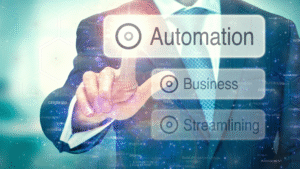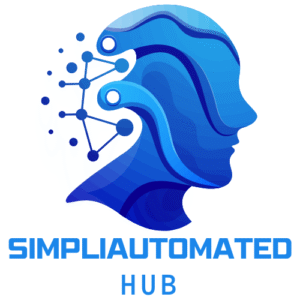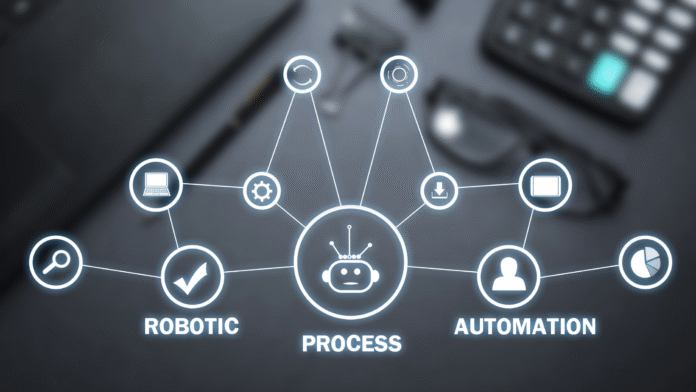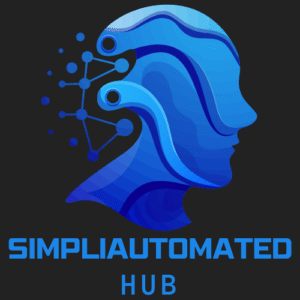Imagine automating away your least favorite task—then scaling that up to transform entire industries. In 2025, that’s not a daydream; it’s happening right now, powered by AI automations that are shaving hours, dollars, and headaches off business-as-usual across the globe.
Here’s a number you won’t soon forget: By next year, over 90% of enterprises in fields like healthcare, finance, and manufacturing will use AI automation for at least one business-critical process. That’s not tech hype—it’s bottom-line reality. And if you’re reading this, there’s a good chance you’re already looking for a smarter way to compete.

But finding the “sweet spot” isn’t just about slapping an AI chatbot on your website or automating a single workflow. The biggest wins go to those who know where automation returns the most value—whether it’s boosting efficiency, leveling up customer engagement, or slicing compliance costs.
Wondering what real-world innovations are reshaping business for marketers, tech-savvy professionals, or creative builders like you? Here’s what’s on the horizon:
- Which industries have a competitive edge—and why
- How automation is reshaping daily work, not just future plans
- Top use cases and toolkits making an impact, no computer science degree required
- Emerging niches where agencies and entrepreneurs can solve new pain points, fast
This isn’t about chasing buzzwords—it’s about unlocking actionable solutions, navigating the latest platforms, and mapping opportunities others miss.
Curious which sectors are already seeing explosive ROI from AI automation, and how the fundamentals are evolving to make that possible? Get ready to see why 2025 is the year smart automation turns from “side project” to core advantage.
Let’s set the stage with a quick look at how the foundations of AI automation have evolved—and why knowing the basics can put you miles ahead of the competition.
The Evolution of AI Automation: Foundations for 2025
AI automation has reached an explosive tipping point, fueled by a few unstoppable forces: data proliferation, smarter cloud platforms, and breakthroughs in machine learning.
Picture this: In 2025, the world generates a staggering 463 exabytes of data each day—that’s enough to fill nearly 212 million DVDs daily.

Companies can’t manually mine all that info, so AI tools step in, making mountains of data work smarter for you, not harder against you.
Essential Tech Under the Hood
Four core AI concepts drive almost every automation breakthrough you see in the wild:
- Machine Learning (ML): Teaches software to spot patterns and predict outcomes, like a playlist that gets your mood right every time
- Natural Language Processing (NLP): Enables machines to understand, summarize, and even chat with you in plain English
- Computer Vision: Powers everything from defect detection in factories to “try-on” apps in retail, by interpreting images and video
- Robotic Process Automation (RPA): Think of invisible “digital robots” that take over repetitive tasks like data entry and approval flows
This isn’t sci-fi—it’s your inbox filtering spam, your bank flagging a suspicious transaction, or a chatbot resolving your order issue in seconds.
Converging for Business Transformation
When you combine these pillars, the possibilities multiply:
- Automate tedious workflows—from onboarding new hires to reconciling financial records
- Predict what customers, patients, or users need next using analytics that learn continuously
- Increase accuracy and consistency by letting AI handle trillions of micro-decisions in real-time
Businesses eliminating routine admin work are seeing up to 40% efficiency gains and cost reductions of 20-30%, according to recent enterprise surveys.
From Milestones to Now
AI’s rise didn’t just “happen.” Landmark moments paved the way:
- 2018: Transformer models like BERT revolutionized language tasks, making NLP practical for business
- 2020: Pandemic disruption spurred urgent adoption of automation for everything from remote work to supply chain stability
- 2023-2024: AI copilots and no-code tools hit the mainstream, removing tech barriers for even the smallest teams
Those breakthroughs led directly to today’s AI-augmented workplaces, where AI helps humans focus on high-impact, creative, or relationship-driven tasks.
AI automation in 2025 is less about replacing jobs and more about removing friction—unlocking speed, accuracy, and actionable insights. The key takeaway? Understanding these core technologies lets you spot, evaluate, and deploy the right automation faster than the competition.
Top Industries Leading the AI Automation Wave
AI automation in 2025 is dominating high-impact sectors—think healthcare, finance, manufacturing, retail, and logistics. Nearly 90% of enterprises in these fields now use AI for at least one core business process, according to recent industry surveys.

Billions in global investment are pouring into AI R&D, with North America and Asia-Pacific outpacing Europe in both funding and deployment speed. But sector-specific regulations—like HIPAA in healthcare or GDPR in Europe—mean adoption rates and compliance hurdles still vary by region.
Macro Trends: Who’s Racing Ahead?
The leaders aren’t random—you’ll find these industries at the front because they’re:
- Managing massive data volumes (healthcare, finance)
- Streamlining repetitive or regulated workflows (manufacturing, energy, education)
- Prioritizing personalization and real-time engagement (retail, customer service, marketing)
- Facing constant pressure to improve efficiency and stay compliant
Insider tip: “If your industry is drowning in paperwork or repetitive tasks, you’re an AI automation target in 2025.”
Sector Snapshots: Visualize the Impact
Picture this: In a hospital, AI triages patients and assigns real-time diagnosis support, cutting wait times by 40%. Over in finance, machine learning scans millions of transactions daily—flagging fraud within seconds.
Jump to manufacturing, where computer vision spots defects on the assembly line, keeping error rates under 2%. In retail, AI predicts next week’s top-selling items and delivers instant chat support that feels human.
- Healthcare: AI-driven diagnostics and record management
- Finance: Real-time fraud detection, automated loan approvals
- Manufacturing: Predictive maintenance, quality assurance
- Retail & E-commerce: Personalization, inventory optimization
- Energy: Workflow automation, smart resource use
- Education: Adaptive learning, AI bots for admissions
- Customer Service: Conversational agents solving problems 24/7
- Logistics: Route planning, autonomous vehicles
Cross-Industry Similarities and Takeaways
No matter the sector, winning teams double down on:
- Seamless data management across platforms
- Proactive workforce transformation (think upskilling, not layoffs)
- Automated compliance checks and personalized user experiences
Quotable moment: “AI in 2025 is less about robots replacing people, and more about freeing up humans for high-value work.”
For every industry scanning this landscape, here’s the bottom line: The real ROI comes from automating the boring stuff so your team can focus on what matters most.
Core AI Automation Applications and Use Cases
AI automation isn’t just for Silicon Valley labs anymore—it’s powering practical solutions that touch every major industry daily.

Whether you’re running a lean marketing team or reimagining supply chain ops, you’ll see these core application themes making an immediate impact:
Administrative and Process Automation
Picture this: a hospital replaces endless patient intake paperwork with a few quick taps on a tablet.
That’s administrative and process automation at work, and it’s saving organizations hours every day.
- Onboarding automation: HR departments cut manual processing time by up to 70% using AI workflows that automatically verify credentials, schedule orientations, and send digital welcome packs.
- Digital record-keeping: Clinics and banks rely on AI to organize, update, and securely store millions of records, reducing both errors and compliance headaches.
One quote you’ll want to swipe: “Workflows that once swallowed afternoons now finish in minutes—with higher accuracy.”
Predictive Analytics & Decision Support
Imagine feeling confident, not anxious, when making quarterly forecasts.
- Risk prediction: Banks using machine learning spot fraud patterns instantly, lowering false positives by 40% in recent pilots.
- Demand forecasting & resource allocation: Retailers plug in AI to anticipate sales surges, slashing excess inventory costs by as much as 20%.
You’ll hear this everywhere in 2025: “The best business moves are powered by the data you don’t see—until AI brings it to light.”
Customer Engagement & Personalization
AI is the undercover MVP behind every personalized shopping moment.
- Chatbots and virtual assistants: Retailers and insurers use AI to handle up to 80% of customer queries—fast, friendly, and on-brand 24/7.
- Tailored recommendations: Streaming services and e-commerce giants boost engagement with “just-for-you” suggestions, driving conversion rates up to 30%.
A visual you’ll want to share: an AI-powered chatbot handling thousands of questions, so human teams can focus on what really matters.
Quality & Compliance Automation
Regulations and audits don’t have to be terrifying anymore.
- Automated audits: Accounting firms use AI to review thousands of transactions in real-time, catching errors within seconds.
- Fraud detection: Financial teams see a 25% drop in fraudulent incidents after integrating AI surveillance tools.
Content Generation & Creative Automation
If you’ve ever wished for a clone to handle your content calendar, AI’s the next best thing.
- Visual and video creation: Marketers crank out campaign visuals in minutes using tools like DALL·E, while video platforms auto-localize content for global audiences.
- Language localization: Brands automate translation with human-grade speed, scaling international launches in days, not months.
The golden takeaway: AI automation frees your team to focus on high-impact, creative, and strategic tasks.
In a world where every hour and insight counts, adopting even one of these AI-powered applications could propel your business into the top tier of efficiency—and ahead of trends that are shaping 2025’s winners.
Leading AI Tools and Platforms Shaping Automation
When it comes to AI automation in 2025, a handful of platforms have changed how work gets done across nearly every major industry. Picking the right tool isn’t just about features—it’s about how these platforms slot into your actual daily workflows, your team’s tech comfort level, and your business goals.
Must-Know AI Automation Leaders
Picture this: You’re running a marketing agency, a manufacturing plant, or a healthcare practice. Where do you start? Here are the industry-leading AI platforms making real-world business impact:
- ChatGPT Enterprise & Claude: Revolutionize virtual assistant support, email drafting, and enterprise-level productivity.
- Salesforce Einstein: Powers CRM automation, smarter sales funnels, and personalized marketing for customer-focused teams.
- UiPath RPA & n8n: Unlocks robotic process automation—even across complex, legacy systems, helping manufacturers and service providers digitize at scale.
- ServiceNow Now Assist: Streamlines enterprise service management, integrating easily with existing IT infrastructure.
- Microsoft Power BI, IBM Watsonx, Google Vertex AI: Deliver robust predictive analytics, actionable business intelligence, and improve operational decision-making.
- DALL·E Business Suite & Synthesia: Enable marketers and content creators to generate visuals and videos on demand, localize campaigns, and save hours per project.
“AI platforms aren’t just tools—they’re now teammates, accelerating what’s possible in your business.”
Matching Platforms to Industry and Need
Choosing comes down to a few essentials:
- Primary Use Case: Is your core need automation, analytics, content creation, or customer interaction?
- Integration: Do you need plug-and-play with Microsoft, Salesforce, or your ERP system?
- Industry Trends: Healthcare, finance, and retail are racing to automate with sector-specific solutions—UiPath in healthcare, Power BI in finance, Einstein for retail and service.
- Adoption Speed: 84% of enterprises piloting AI automation platforms in 2025 choose tools based on integration speed and proven ROI within months.
“A single platform can save teams hundreds of hours each quarter—but only if it fits your specific workflow.”
Quick Selection Guide: What to Ask Before Investing
Break the evaluation down with these quick-fire criteria:
- Will this platform reduce manual effort in our highest-cost workflows?
- Does it support the data types and regulations my industry faces?
- How seamless is integration with tools we already love (like Slack, SAP, or Google Workspace)?
- What does onboarding really look like—are there resources for training and support?
- Is there a clear path to measurable ROI within 6-12 months?
“You don’t want another dashboard. You want a platform that actually pays for itself—and then some.”
In short, the right AI platform transforms busywork into business value. Start by matching your most tedious processes to the tool that fits, and you’ll see automation-driven ROI sooner than you think.
High-Value Niches and Emerging Opportunities for Agencies and Builders
Where Agencies, Consultants, and Innovators Get the Biggest Bang for Their Buck
If you’re looking for AI automation’s hottest opportunities in 2025, start where demand is surging but solutions are still evolving.
Picture this: your agency swoops in to streamline a messy process that’s costing SMBs countless hours—or helps a creative brand boost campaign output using generative AI.

Those quick wins are everywhere, but knowing where they cluster makes all the difference.
Fast-Growing Niches with Unmet Automation Needs
Based on current data, watch for the biggest payoffs in:
- SMB process automation: Small and mid-size businesses are notoriously underserved, but AI tools now scale to their budgets and tech stacks.
- AI-powered compliance: Regulated sectors (think finance, healthcare) are desperate for smarter audit trails and automated reporting—especially with evolving regional laws.
- Creative industries: Video gen, campaign localization, and content automation top the list as teams rush to do more with less.
- Back-office transformations: Finance, HR, and procurement departments are ready for AI to cut manual processes and error rates.
Pro tip: Over 60% of SMBs cite “workflow automation” as a 2025 technology priority, but less than 20% have fully adopted AI-driven tools. That’s a $40B opportunity.
Tips for Evaluating Which Opportunities to Chase
Not every niche is worth the sprint—smart agencies evaluate:
- Market maturity: Is the niche just trending, or do end-users already allocate budget?
- Competition level: Are there 5, 50, or 500 agencies already pitching this?
- Integration barriers: How easily do automation platforms connect to their existing software?
- Regulatory climate: Are there new standards driving urgent action?
Look for signals like “urgent compliance needs,” recurring process pain, or rising spend on workflow software.
Where to Dive Deeper
Ready to get tactical? You’ll want to check out:
- AI agency guides (for vertical-specific prospecting tips)
- Recent niche automation case studies (for inspiration and pitfalls to avoid)
- Peer communities for agency builders (for up-to-date market pulse and tool recs)
Finding the right AI automation niche in 2025 is about timing, fit, and being the first to solve a genuine pain. Picture helping dozens of companies reclaim hundreds of hours, while building recurring revenue you can actually predict. That’s a playbook worth repeating.
Business Transformation: Strategic Benefits and ROI of AI Automation
AI automation isn’t just hype—it’s the engine powering dramatic shifts in how work gets done. Companies automating their core functions have seen up to a 35% productivity boost and cost reductions as high as 30% per process in 2024 alone.

When you automate, you unlock several real-world wins, including:
- Faster workflows: Think of HR tasks, invoice processing, or lead scoring running in minutes instead of hours.
- Fewer errors: Machine learning in finance reduces human error rates by up to 80%, keeping audit trails squeaky clean.
- Real-time decisions: Retailers use AI for dynamic pricing—adjusting thousands of products on the fly based on demand, boosting sales by double digits.
“If you want more accurate, reliable, and scalable processes—AI automation gets you there faster than any manual fix ever could.”
Quantifying ROI: Numbers, Stories, and Scenarios
For every dollar invested, businesses are often seeing $3–$8 in direct efficiency gains.
Picture this: A healthcare system automates onboarding—patients fill out digital forms, AI agents handle requests, and onboarding time drops from 40 minutes to just 10. That’s not just convenience; it’s recaptured staff hours and improvements in care.
Main ROI drivers include:
- Lower labor costs: AI-powered chatbots now handle over 70% of customer inquiries without human input.
- Quick scalability: Manufacturers ramp up output instantly with predictive maintenance, slashing downtime by up to 50%.
- Edge in the market: Early adopters report 20% higher customer satisfaction scores due to smarter, faster service.
“When you can deliver double the output without doubling the hours, your team suddenly has time to focus on big ideas, not busywork.”
Beyond the Numbers: Qualitative Wins and Caveats
The softer side of automation gets overlooked: employee satisfaction jumps when repetitive tasks disappear, and cross-team creativity blossoms as folks spend more time on strategy.
But let’s get real—AI isn’t magic. Expect these hurdles:
- Learning curves: Upskilling staff takes effort and time (and sometimes a little grumbling).
- Integration headaches: Smooth automation relies on connecting old and new systems, which isn’t always plug-and-play.
- Ethics and bias: Responsible AI means auditing for fair, transparent outcomes, not just chasing speed.
“Automation without thoughtful deployment can create as many headaches as it solves. Ethical scaling is a non-negotiable part of the journey.”
AI automation delivers real, measurable ROI—but the biggest wins come to those who plan for people, process, and responsible scaling together. If you lead with value and keep ethics at the core, the transformation sticks and the numbers follow.
Success Stories: Highlighting Real-World Impact
Picture this: In 2025, AI-powered automation isn’t just an abstract promise—it’s saving businesses thousands of hours, cutting costs, and delighting customers daily.
Let’s break down exactly how companies are seeing ROI, and what you can steal for your next workflow upgrade.
Healthcare: Automation Meets Accuracy
A leading hospital group used AI-driven diagnostics and automated patient onboarding. They achieved:
- 30% less time spent on paperwork
- 14% increase in early-detected conditions
- More time for clinicians with patients, less time in front of screens
Quotable moment: “In healthcare, AI is literally buying back hours for real patient care.”
Finance & Fraud: Dollars Saved, Stress Reduced
Top finance players rolled out AI-based fraud detection that flags anomalies in real time, slashing false positives by 60%.
- Average cost savings reached $2M per year
- Loan approvals now processed in minutes, not days
- Compliance audit prep went from weeks to real-time reporting
Social-ready stat: “AI cut loan approval times 90%. Imagine never hearing ‘your application is under review’ again.”
Manufacturing & Retail: Streamlining to Scale
Major manufacturers deployed predictive maintenance and vision-based quality checks:
- Downtime dropped 40%
- Defects cut in half, driving visible bottom-line gains
Retailers leveraged personalized AI recommendations for e-commerce shoppers:
- 20% boost in sales conversions
- Customer satisfaction up as instant support solved issues faster
Visual scenario: Imagine a factory floor where machines “call in sick” before they fail—or a shopper who finds exactly what they want, instantly.
Overcoming Barriers: Lessons Learned
Across all industries, success stories pointed to a few universal strategies:
- Start with one high-impact workflow—avoid “big bang” overhauls
- Invest early in training and change management
- Prioritize data quality to maximize AI effectiveness
Quotable truth: “The most valuable automation is the kind that frees humans for what only humans can do.”
When you zoom out, the pattern is clear—real-world AI automation delivers measurable wins wherever teams stay focused, data-driven, and user-centered. The biggest lesson? Begin with a nagging bottleneck and measure everything. Every hour or dollar saved by a bot is time and profit you’ll never want to give back.
Navigating Adoption: Implementation Challenges, Ethics, and the Human Factor
AI automation promises real transformation, but translating hype into reality means surfacing hidden obstacles right from day one.
Picture this: You’ve just deployed a smart chatbot, only to find your team overwhelmed by integration headaches, regulatory questions, and—yep—resistance to change.
Core Roadblocks to AI Automation
Let’s get specific about why adoption isn’t “plug and play.” The most common blockers include:
- Talent gaps: 67% of organizations cite shortage of skilled staff as their top barrier to AI adoption.
- Integration bottlenecks: Legacy tools often don’t play nice with modern AI platforms, leading to costly delays.
- Change resistance: Employees worry automation will upend their roles, causing friction and slowing buy-in.
- Regulatory uncertainty: Data privacy laws and industry standards can complicate deployment, especially across borders.
“Rolling out AI isn’t just a tech project—it’s a cultural test for your whole organization.”
The Human Factor: Upskilling and Retraining
Successful automation isn’t about swapping people for robots; it’s about evolving skills.
- Workforce retraining is now table stakes: Gartner reports 58% of companies rank upskilling as their #1 path to sustainable AI gains.
- Empower employees through hands-on workshops, not just handbooks, to build confidence alongside new tools.
- Encourage feedback loops—let staff surface real workflow snags before they become blockers.
Picture a team review: “Yes, the AI processes invoices faster, but we need quick-reference guides for exception handling.”
Ethics, Bias, and Responsible AI Deployment
It’s not just what your AI can do, but what it should do.
Every rollout must center:
- Transparency: Make it clear where and how AI is making decisions.
- Bias prevention: Regular bias audits are essential—over 74% of leaders list this as top compliance priority.
- Data privacy: Implement robust access and data-handling controls, or risk costly compliance fines.
- Clear governance: Set responsibilities for ongoing monitoring and handling of edge-case scenarios.
“AI ethics isn’t a checkbox—it’s an ongoing conversation that shapes your brand’s reputation and legal standing.”
Navigating Forward: Practical Steps and Community Resources
To keep momentum without derailing trust:
- Start with manageable pilots, not massive overhauls—showcase wins, learn quickly.
- Tap resources like the AI Ethics Consortium or OpenAI’s community forums for peer lessons and policy templates.
- Host honest Q&As, spotlighting both successes and speed bumps to keep teams engaged.
The takeaway: Bold automation is always a team sport. When you balance technical horsepower with human trust and transparency, you set yourself up for the kind of long-term success that others want to copy.
Conclusion
Embracing AI automation in 2025 isn’t just about chasing trends—it’s your ticket to working smarter, unlocking untapped ROI, and freeing your team for work that truly moves the needle.
You have the insight and the tools to turn routine tasks into instant wins, tackle real business bottlenecks with precision, and stay competitive in industries evolving faster than ever.
- Pinpoint the top inefficiencies in your current workflow—identify the area where automation could have immediate impact.
- Pilot a single AI platform or tool in a low-risk process, tracking time and cost savings so you can measure real-world ROI.
- Invest in upskilling your team to close gaps and build buy-in—AI thrives best in empowered hands.
- Match tools to your industry’s needs, not just popular features—choose automation that integrates with your existing stack.
- Lead with transparency and ethical standards to build trust with employees, customers, and regulators alike.
To make the leap from potential to performance:
- Assess which business process is costing you the most—launch an automation trial this quarter.
- Bring your team onboard early—host a brainstorm, run a workshop, and capture feedback at every stage.
- Connect with AI builder communities or agency networks to swap real-life lessons and fast-track your adoption curve.
Your next breakthrough doesn’t have to be a moonshot. It starts with a single, smart automation upgrade—one that saves hours, sparks momentum, and lays the foundation for lasting transformation.
The future isn’t waiting—AI automation is already separating the leaders from the laggards. The only question is: will you act now, or watch others outpace you? The next chapter in business efficiency is yours to write.









